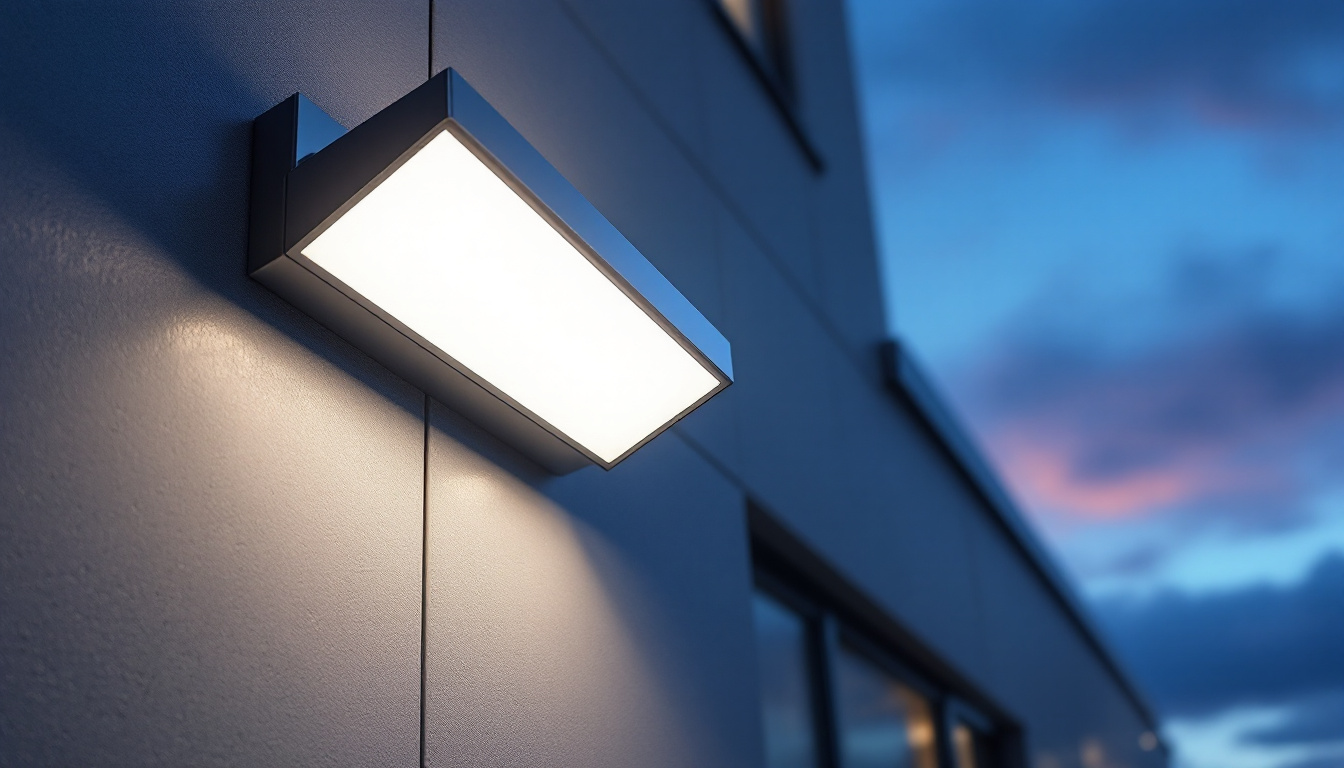
Lighting is an essential aspect of any construction or renovation project, and understanding the nuances of post lighting is crucial for lighting contractors. This article delves into the science behind post lighting, exploring its applications, benefits, and the technical considerations that contractors must be aware of to deliver optimal results for their clients.
Post lighting refers to the use of light fixtures mounted on posts, typically used for outdoor spaces such as parks, pathways, and residential yards. These fixtures serve both functional and aesthetic purposes, illuminating areas for safety while enhancing the visual appeal of landscapes.
Post lights come in various styles and designs, ranging from traditional lanterns to modern, sleek fixtures. They can be powered by electricity or solar energy, making them versatile for different environments and applications. The choice of materials, such as aluminum, stainless steel, or even wood, further allows homeowners and designers to select fixtures that complement their specific outdoor aesthetics, whether rustic, contemporary, or somewhere in between.
Post lighting is widely used in various settings, including residential, commercial, and public spaces. In residential areas, post lights are often installed along driveways, walkways, and patios, providing illumination that enhances safety and security. These lights can also be used to define property boundaries or highlight garden features, such as flower beds or water features, creating a warm and inviting atmosphere during evening gatherings.
In commercial settings, post lighting can illuminate parking lots, outdoor dining areas, and building entrances, creating an inviting atmosphere for customers. The strategic placement of these fixtures not only enhances visibility but also contributes to the overall branding of a business, making it more recognizable and appealing. Public spaces, such as parks and recreational areas, benefit from post lighting by ensuring visibility during nighttime hours, encouraging community engagement and safety. Moreover, well-lit parks can host evening events, such as movie nights or festivals, fostering a sense of community and allowing for extended use of these spaces after sunset.
One of the primary benefits of post lighting is increased safety. Well-lit pathways and outdoor areas reduce the risk of accidents, making it easier for individuals to navigate spaces after dark. This is particularly important in residential neighborhoods and commercial properties where foot traffic is common. Additionally, the presence of lighting can deter potential criminal activity, as well-lit areas are less appealing to intruders.
Additionally, post lighting enhances the aesthetic appeal of outdoor spaces. By strategically placing fixtures, contractors can highlight architectural features, landscaping, and other design elements, creating a visually pleasing environment that attracts attention. The use of dimmable LED options allows for customization of brightness, enabling homeowners and businesses to adjust the ambiance according to the occasion, whether it’s a festive gathering or a quiet evening at home. Furthermore, advancements in smart lighting technology enable users to control their post lights remotely, adding convenience and energy efficiency to outdoor illumination.
Understanding the science of light is essential for lighting contractors. Light behaves in predictable ways, and knowledge of these principles can significantly impact the effectiveness of post lighting installations.
Light is composed of electromagnetic waves, and its properties can be categorized into several key areas: intensity, color temperature, and distribution. Each of these aspects plays a crucial role in how light interacts with the environment and influences the perception of space.
Intensity refers to the amount of light emitted from a source, often measured in lumens. The higher the lumen output, the brighter the light. For post lighting, selecting the appropriate intensity is crucial to ensure adequate illumination without causing glare or light pollution.
Contractors must consider the intended use of the space when determining the required intensity. For example, a pathway may require less light than a commercial parking lot, where higher intensity is necessary for safety and visibility. Additionally, the surrounding environment can influence how light is perceived; for instance, areas with reflective surfaces may amplify brightness, necessitating a careful balance in lumen output to avoid overwhelming glare.
Color temperature, measured in Kelvin (K), describes the appearance of light emitted by a source. Lower Kelvin values (2700K-3000K) produce warm white light, while higher values (4000K-5000K) yield cool white or daylight-like illumination.
The choice of color temperature can significantly affect the ambiance of a space. Warm white light creates a cozy, inviting atmosphere, making it suitable for residential applications. In contrast, cooler temperatures are often preferred for commercial settings, as they promote alertness and visibility. Furthermore, understanding the psychological effects of color temperature can help contractors tailor lighting solutions to enhance mood and productivity; for example, cooler lights can improve focus in work environments, while warmer tones can facilitate relaxation in leisure spaces.
Light distribution refers to how light is spread across a given area. Different fixtures have varying distribution patterns, such as narrow, wide, or asymmetrical. Understanding these patterns is essential for achieving even illumination and avoiding dark spots.
Contractors should assess the layout of the area being illuminated and choose fixtures that provide the appropriate distribution. This consideration ensures that light is effectively directed where it is needed most, enhancing both safety and aesthetics. Moreover, the strategic placement of fixtures can create visual interest and highlight architectural features, making it essential to consider not just functionality but also the artistic aspect of lighting design. For instance, using wall-mounted fixtures to cast light upward can create a dramatic effect, transforming a simple space into a visually engaging environment.
When installing post lighting, several technical considerations come into play. From selecting the right fixtures to ensuring proper installation techniques, contractors must be well-versed in various aspects to achieve successful outcomes.
Choosing the right fixtures is critical for achieving the desired results. Factors such as style, material, and energy efficiency should be taken into account. For instance, fixtures made from durable materials like aluminum or stainless steel are ideal for outdoor environments, as they can withstand harsh weather conditions.
Energy efficiency is another important consideration. LED fixtures are increasingly popular due to their long lifespan and low energy consumption. By selecting energy-efficient options, contractors can provide clients with sustainable solutions that reduce long-term operational costs. Furthermore, the color temperature of the LED lights can significantly influence the ambiance of the space. Warmer tones can create a cozy atmosphere, while cooler tones are often preferred for security and visibility in commercial settings.
Proper installation techniques are vital for ensuring the longevity and effectiveness of post lighting. This includes selecting the appropriate height and spacing for fixtures. Generally, post lights should be installed at a height that maximizes visibility while minimizing glare.
Spacing between fixtures is also crucial. Too much distance can result in poorly lit areas, while too little can create excessive brightness and glare. A well-planned layout will ensure that light is evenly distributed across the intended area. Additionally, contractors should consider the use of smart lighting controls, which can enhance functionality by allowing for dimming, scheduling, and even remote operation. This can be particularly beneficial in areas that require varying levels of illumination based on time of day or specific events.
Lighting contractors must be aware of local regulations and codes governing outdoor lighting installations. These regulations often dictate aspects such as fixture height, light intensity, and allowable color temperatures. Compliance is essential to avoid potential fines and ensure that installations meet safety standards.
Additionally, contractors should consider the impact of light pollution on surrounding areas. Implementing measures to minimize light spill and glare can enhance community relations and contribute to a more sustainable approach to lighting design. This may involve using shielded fixtures or strategically placing lights to focus illumination where it is most needed, thereby preserving the natural night sky and protecting local wildlife. Engaging with local community stakeholders during the planning phase can also foster goodwill and ensure that the lighting design aligns with the aesthetic and functional needs of the neighborhood.
The field of lighting design is constantly evolving, with new trends emerging that reflect changing preferences and technological advancements. Staying informed about these trends can help contractors offer innovative solutions to their clients.
Smart lighting technology is gaining traction in post lighting applications. These systems allow for remote control and automation, enabling users to adjust brightness levels, set schedules, and even change color temperatures through smartphone apps or smart home systems.
Integrating smart technology can enhance the user experience and provide additional energy savings, making it an attractive option for residential and commercial clients alike.
As sustainability becomes a priority for many homeowners and businesses, eco-friendly lighting options are in high demand. Solar-powered post lights are an excellent example, utilizing renewable energy to provide illumination without increasing electricity costs.
Contractors can also explore fixtures made from recycled materials or those that incorporate energy-efficient technologies to appeal to environmentally conscious clients.
Modern post lighting designs often emphasize seamless integration with architectural elements. This trend involves selecting fixtures that complement the overall design of a building or landscape, creating a cohesive look that enhances the visual appeal of the space.
Contractors should collaborate with architects and designers to ensure that lighting choices align with the overall aesthetic vision, resulting in a harmonious blend of functionality and style.
Post lighting plays a vital role in enhancing outdoor spaces, providing safety, security, and aesthetic appeal. For lighting contractors, understanding the science behind post lighting is essential for delivering successful installations that meet client expectations.
By considering factors such as light intensity, color temperature, and distribution, along with technical considerations and emerging trends, contractors can create effective lighting solutions that enhance the beauty and functionality of outdoor environments. As the industry evolves, staying informed and adaptable will ensure continued success in the competitive field of lighting design and installation.
Ready to elevate your lighting projects with the best in the industry? At LumenWholesale, we provide lighting contractors like you with the highest quality, spec-grade lighting products at prices that can’t be beaten. Say goodbye to unnecessary markups and hello to a vast selection of reliable, high-performance lighting that meets the strictest industry standards. Plus, with free shipping on bulk orders, you can stock up on premium lighting solutions without worrying about hidden costs. Don’t compromise on quality or value; choose LumenWholesale for a seamless blend of excellence and affordability. Wholesale Lighting at the Best Value is just a click away.

Discover the key benefits and features of 150-watt LED lamps that every lighting contractor should know.

Explore the transformative journey of LED wall packs in the lighting industry, highlighting their energy efficiency, durability, and innovative design.

Discover how ceiling mount lights are transforming spaces with real-world success stories from lighting contractors.

Discover essential insights and expert advice for lighting contractors in “Light Amber: Key Tips for Lighting Contractors.” Explore innovative techniques, industry trends, and practical strategies to enhance your projects and illuminate success..